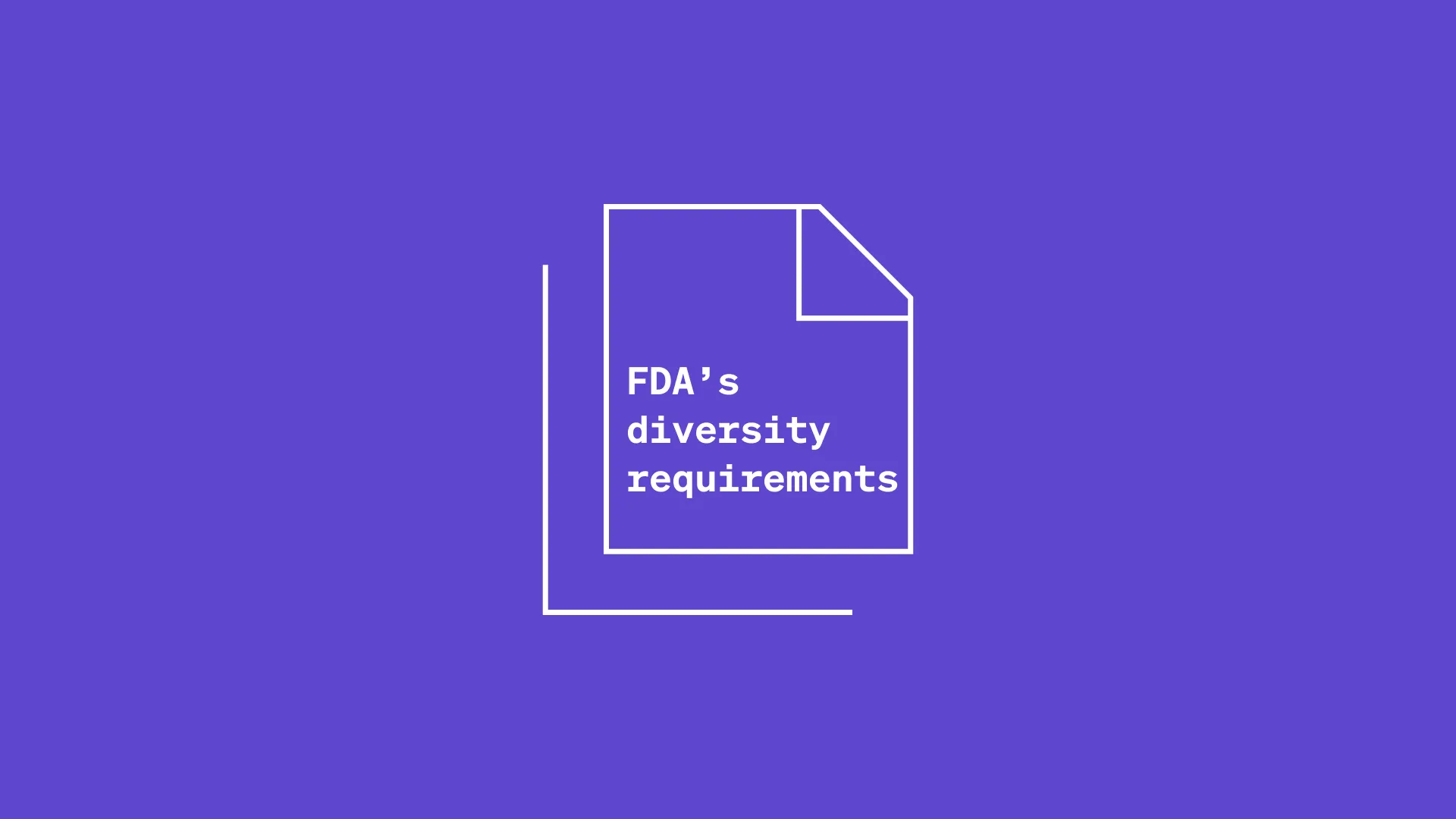Authors: Pamela Tenaerts, Chief Scientific Officer; Kevin Potgieter, VP Regulatory; Mohammed Ali, Chief Domain Officer
The recent release (May 2023) of the FDA's Decentralized Clinical Trial (DCT) Draft Guidance has sparked a wave of excitement and anticipation within the field of clinical trials. This long-awaited guidance represents a significant milestone in the evolution of clinical trial methodologies, signaling clear support for the global shift towards expanded trial models. This guidance reinforces the FDA's commitment to supporting innovation in clinical trial design and emphasizes the need for careful consideration, training, oversight, and risk management for successful DCT implementation.
Key Points from the FDA Draft Guidance
- Identical Requirements: The FDA recognizes that the overall requirements for DCTs are identical to those of traditional site-based trials. This underscores the need for maintaining rigorous standards and scientific integrity in both approaches.
- Full and Hybrid Decentralization: The FDA acknowledges that DCTs can be fully decentralized or contain components of decentralization. Sponsors with simple investigational products may benefit from fully decentralized trials, while a hybrid approach may be more suitable for products with complex medical assessments at specific study sites with remote follow-up visits.
- Coordinating Trial Activities: Coordinating all trial activities in a decentralized clinical trial may present challenges. However, the FDA highlights the importance of having a plan in place to facilitate decentralization. Early discussions with the relevant FDA review divisions regarding feasibility, design, implementation, and analysis are encouraged.
- Training, Oversight, and Risk Assessment: The FDA emphasizes that appropriate training, oversight, and up-front risk assessment and management are crucial to successfully implementing DCTs. Sponsors and stakeholders must proactively address these aspects to ensure the integrity and safety of decentralized trials.
- Safety Monitoring Plan: A safety monitoring plan should summarize actions and workflows to ensure that adverse events are captured in a timely manner as well as adequately addressed. The monitoring plan should prespecify if and when telehealth visits or in-person visits (e.g., physical examinations) will be scheduled with trial personnel or local HCPs to collect safety data by.
- PI Oversight: Oversight of study activities must be ensured, especially when local HCPs are involved in the study. The PI is ultimately responsible for the conduct of the study, along with the study Sponsor. More clarity may be needed on PI oversight for off-site trial activities and data collection, potentially performed by local providers.
Points of View on the FDA Draft Guidance
- All-Encompassing View: Beyond geography, the new guidance is unique in that it includes all potential investigational medical product centers – Center for Drug Evaluation and Research (CDER), Center for Devices and Radiological Health (CDRH), Center for Biologics Evaluation and Research (CBER), and Oncology Center of Excellence (OCE) – thereby, including all investigational medical products – drugs, biologics, and medical devices. This paves the way for advancements in all investigational medical product categories and market sectors. While this is not explicitly a US FDA requirement, there is broad alignment with the EMA Draft Guidelines on DCT, providing a global framework for sponsors and stakeholders.
- Need for Feedback: Stakeholders are urged to study the guidance carefully and provide feedback to the FDA. There is a desire for further clarification on protocol and submission-specific content, including the completion of Form 1572 for hybrid as well as fully decentralized study designs. Addressing these topics effectively through updated Q&A formats in future versions of the Draft Guidance would be valuable.
- Perceived Cost and Burden: Requiring Sponsors to provision study devices when a Bring Your Own Device (BYOD) approach is not suitable, and the documentation requirements for investigator oversight and adverse event management may be perceived as cost-adders and burdensome to protocol design. Balancing the benefits of decentralization with the associated costs and efforts will be a consideration for Sponsors.
- Broad Framework for Innovation: The FDA's relatively broad framework in the Draft Guidance is viewed as a positive approach to fostering innovation in clinical trial design. It allows flexibility while reserving the right to modify guidance or apply resources as needed to ensure patient safety and public health protection.
- Normalizing Tech-Enabled Trials: The FDA's recent flurry of Draft Guidance documents, demonstrates the agency's commitment to normalizing the use of modern technologies in clinical trials. Stakeholders perceive this as a shift from trying to convince the industry to adopt technology to demonstrate how to use it effectively while upholding patient safety and data quality.
- A Call for Further Clarity: Shifting regulatory frameworks, even if seen as positive, can trigger uncertainty in the early stages of adopting new guidance. While the guidance covers various aspects of DCTs, including design, remote visits, digital health technologies, and sponsor and investigator responsibilities, some areas remain vague, such as the oversight of home health visits. Future iterations of the guidance bring more specific guidance on these topics.
The FDA's Draft Guidance on DCTs represents a significant step forward in supporting and encouraging innovation in clinical trial design. By reinforcing the importance of training, oversight, and risk assessment, the FDA aims to ensure decentralized trials' integrity, patient safety, and success. As the guidance evolves and refinements are made, the future of clinical trials will continue to progress, embracing tech-enabled methodologies and advancing patient-centered research. The stage is set for a future where decentralized approaches and digital technologies are the norm rather than the exception.










.webp)
